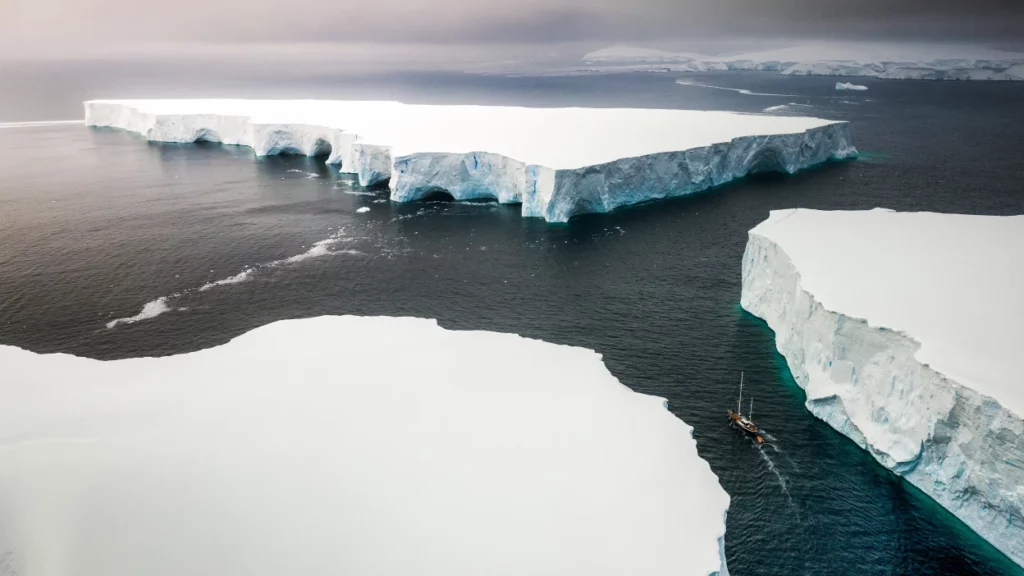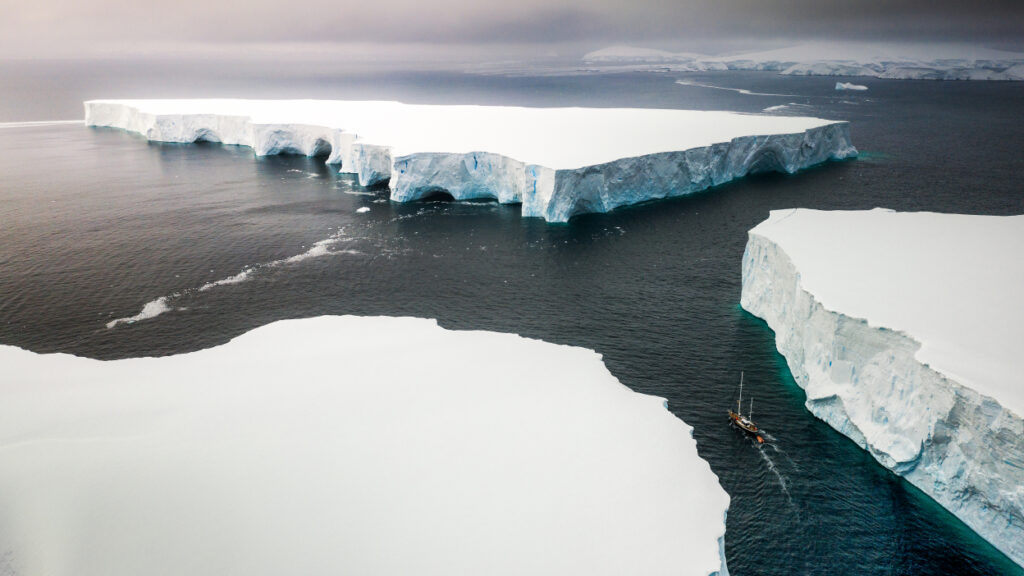The latest way we are all going to die is from the Pine Island Glacier. See, the ice shelf that used to keep it stuck on Antarctica is thinning so the glacier is racing into the Southern Ocean to melt and it could cause the seas to rise more than two-thirds of an inch per century. It’s all over, according to the Washington Post: “The Pine Island glacier was already scary. The 160-mile-long river of ice is known as “the weak underbelly” of West Antarctica. It contributes more to sea level rise than any other glacier on the continent and ranks among the fastest-melting glaciers in the world…. Pine Island contains roughly 180 trillion tons of ice — enough to cause 1.6 feet of sea level rise.” Eventually. Read on and you learn that the annual rate of increase is … one-sixth of a millimeter.
It's interesting to compare the Post’s hype with the actual press release. Which itself makes some effort to add pizzazz to a development that is not just technical but rather dull. The release says Pine Island Glacier “is already responsible for much of Antarctica’s contribution to sea-level rise, causing about one-sixth of a millimeter of sea level rise each year, or about two-thirds of an inch per century, a rate that’s expected to increase.” Uh, two-thirds of an inch per century isn’t scary even if it increases by 50% to an inch. And how fast might things get worse?
Slooowly. “If it and neighboring Thwaites Glacier speed up and flow completely into the ocean, releasing their hold on the larger West Antarctic Ice Sheet, global seas could rise by several feet over the next few centuries.” It’s not very likely that a glacier would rush into the sea in its entirety since what pushes them forward is ice accumulating further up. But even if it somehow did just give up and slide into the water, the overall threat from it and its larger neighbour is several feet by the year 2400 or so. A detail the Washington Post omitted in cranking up the seas by 1.6 feet.
As for why the ice shelf is thinning, it’s warming, obviously. Except it’s not. In fact it’s the glacier flow speeding up. So the glacier is speeding up because the shelf is thinning, and the shelf is thinning because the glacier is speeding up. Thought you’d like to know.
It seems the glacier has been speeding up for years. “From the 1990s to 2009, Pine Island Glacier’s motion toward the sea accelerated from 2.5 kilometers per year to 4 kilometers per year (1.5 miles per year to 2.5 miles per year). The glacier’s speed then stabilized for almost a decade.” Which is obviously due to global warming, whose pernicious effects in this case kicked in thirty years ago but stopped after twenty. Then accelerated madly in 2017.
Now it has been pointed out that melting glaciers don’t advance, they retreat. Thus the Post’s hyperventilation that “Pine Island’s ice shelf used to calve every four to six years, according to NASA, but since 2017 it has lost huge chunks of ice every year” isn’t very scary. It has also been pointed out that Antarctica isn’t getting warmer and hasn’t been for decades. But never mind.
The press release does say “’Sediment records in front of and beneath the Pine Island ice shelf indicate that the glacier front has remained relatively stable over a few thousand years,’ [British Antarctic Survey physicist and study co-author Pierre] Dutrieux said. ‘Regular advance and break-ups happened at approximately the same location until 2017, and then successively worsened each year until 2020.’”
Assuming we know exactly what the glacier did for a few thousand years and can detect three-year anomalies, we’re in trouble. How much? Well, centuries from now a glacier might cannonball into the ocean and raise water levels three feet. In very slow motion.
Better go back to the sea snot. This one’s just not scary.



You forgot to mention. The reason that Pine Island and Thwaites glaciers are moving faster is because there are some 90 active volcanoes under the ice that feeds the glaciers. It is the heat from these volcanoes that causes the increased rate of movement.
Oh, and it has probably been that way from long before humans started looking at these glaciers.
As for the rest of Antarctica - well there has been no detectable climate change for over 7 decades, and before that we prbably do not have good enough data to detect such meniscule changes.
Australia has painted itself into a corner. Dr. Peter Ridd was fired for telling the truth about the Barrier Reef..it is healthy and slightly warming and rising waters would not harm it if it happened.. now China will destroy Reef tourism by monopolizing on the lie that AGW has made the Reef 'endangered '. Australia can't use the truth to defend itself and stick to the scam at the same time.
The Guardian reported on this after the publication of the research paper on Antarctic volcanoes. Their conclusion was that it was still due to climate change. Go figure.